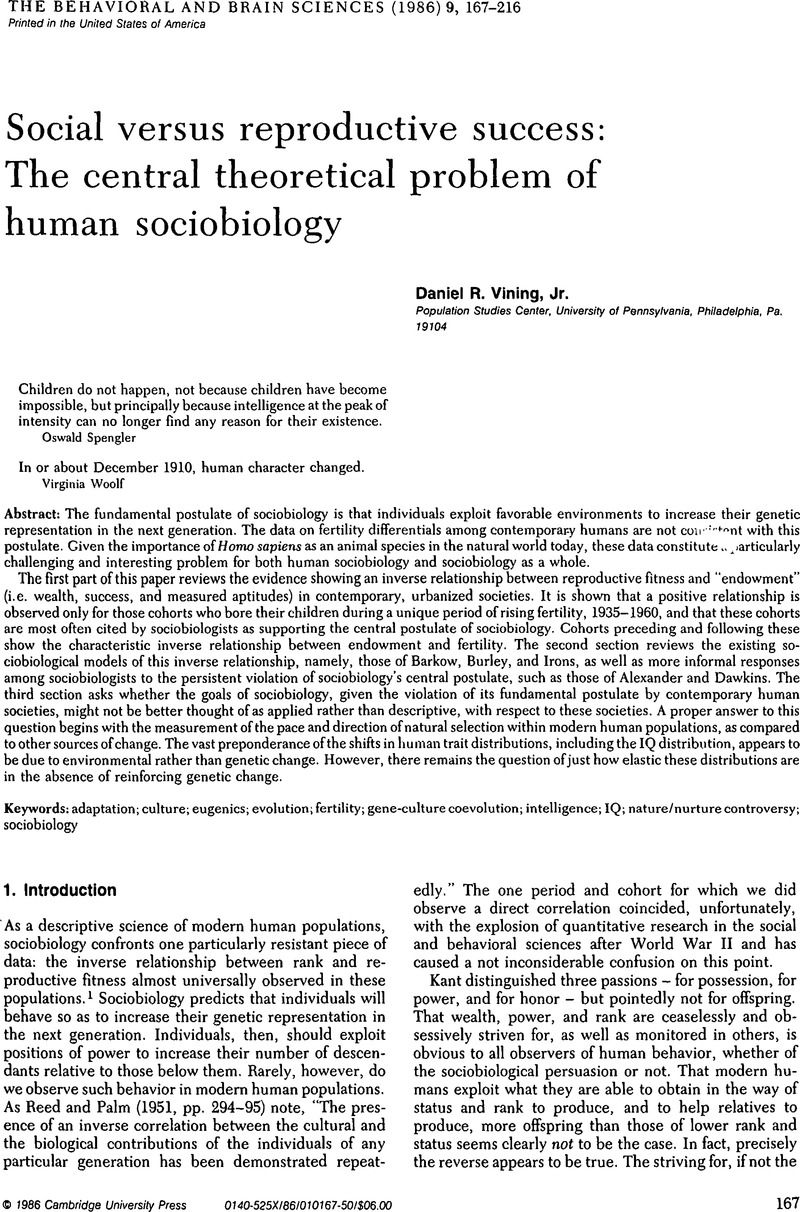Crossref Citations
This article has been cited by the following publications. This list is generated based on data provided by Crossref.
Vining, Daniel R.
1987.
Modern human sociobiology: Some further observations.
Behavioral and Brain Sciences,
Vol. 10,
Issue. 2,
p.
308.
Flinn, Mark V.
1987.
Resources, reproduction, and mate competition in human populations.
Behavioral and Brain Sciences,
Vol. 10,
Issue. 2,
p.
305.
Machalek, Richard
1987.
Are the socially successful an intelligence cartel?.
Behavioral and Brain Sciences,
Vol. 10,
Issue. 2,
p.
307.
Cattell, Raymond B.
1987.
Fitness and intelligence: The more concrete problem.
Behavioral and Brain Sciences,
Vol. 10,
Issue. 2,
p.
305.
Burgess, Robert L.
Kurland, Jeffrey A.
and
Pensky, Emily E.
1988.
Sociobiological Perspectives on Human Development.
p.
293.
Tooby, John
and
Cosmides, Leda
1989.
Evolutionary psychology and the generation of culture, part I.
Ethology and Sociobiology,
Vol. 10,
Issue. 1-3,
p.
29.
Roberts, Joseph Palmer
1990.
The sociobiology of ethnocentrism in an Indian City.
Ethology and Sociobiology,
Vol. 11,
Issue. 6,
p.
465.
Stulp, Gert
and
Barrett, Louise
2016.
Wealth, fertility and adaptive behaviour in industrial populations.
Philosophical Transactions of the Royal Society B: Biological Sciences,
Vol. 371,
Issue. 1692,
p.
20150153.



